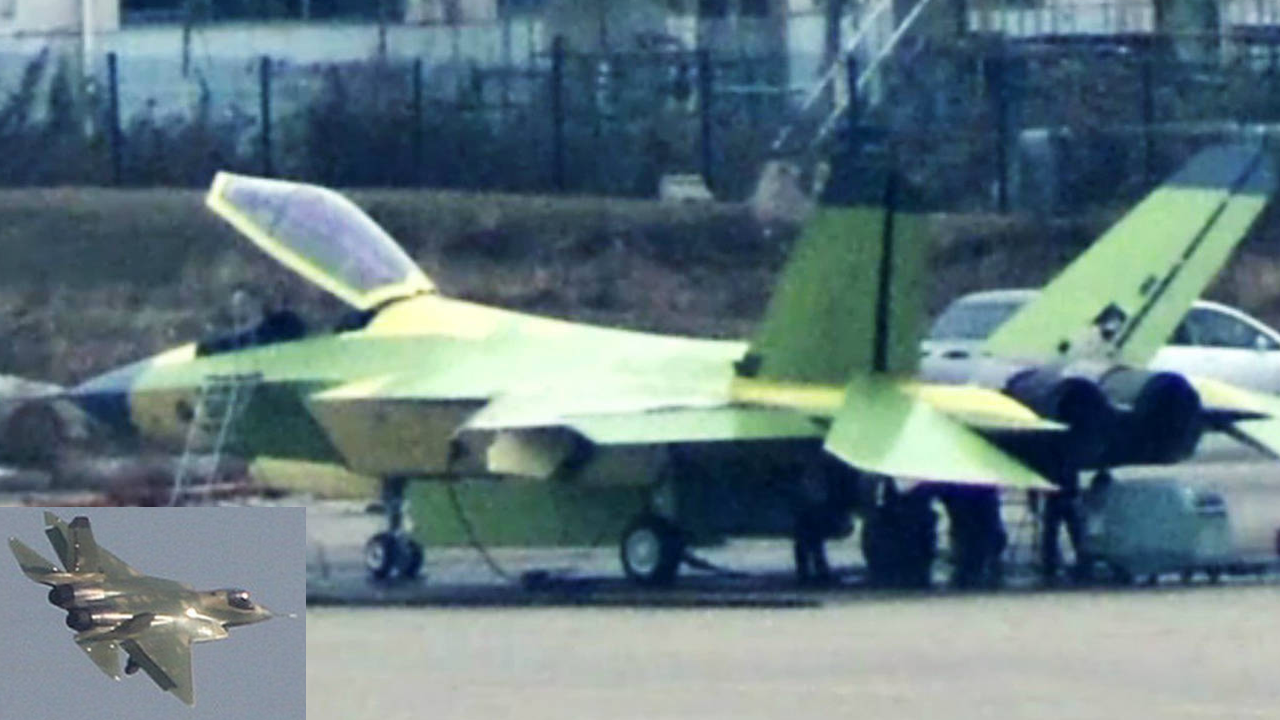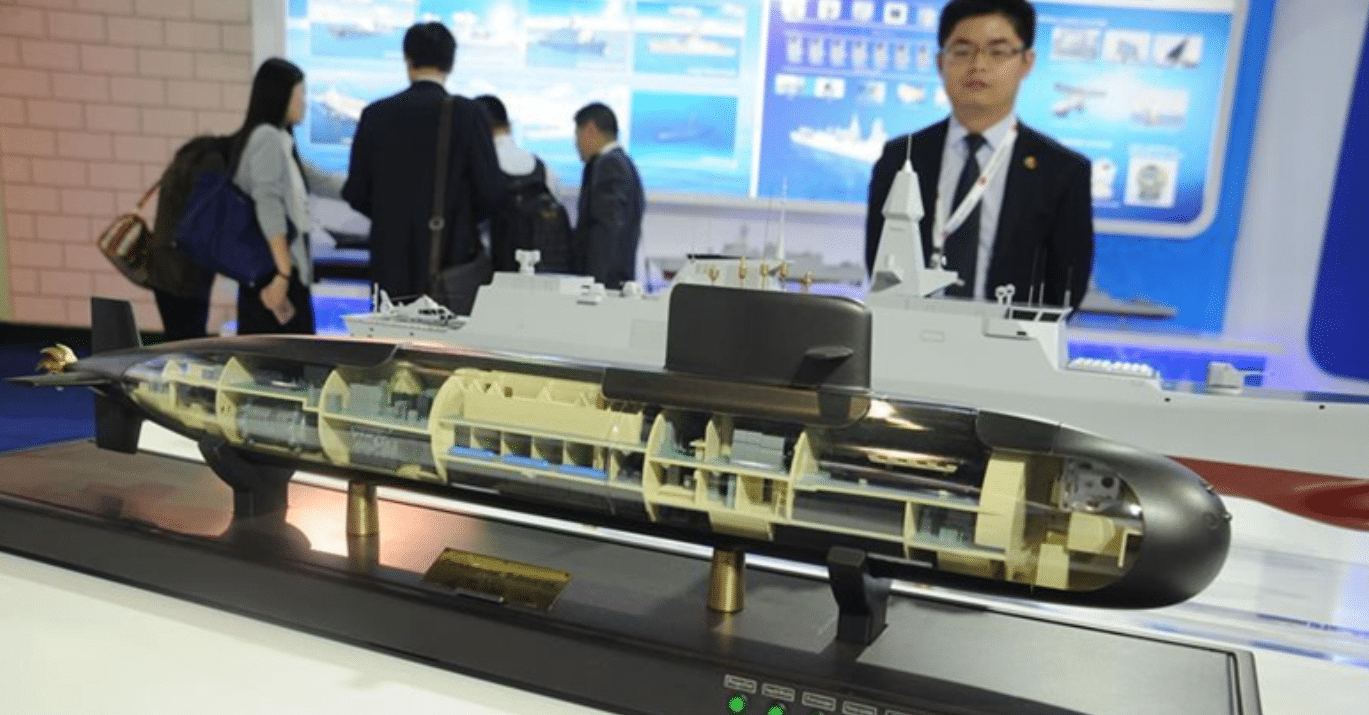2487Views 9Comments

Shenyang FC-31 (v2) takes to the skies for the first time
The second FC-31 prototype, developed and produced by Shenyang Aircraft Corporation (SAC), undertook its maiden test flight on Friday, 23 December 2016.
The FC-31 (v2) is a significant development of the SAC J-31, the Gyrfalcon platform’s original prototype and technology demonstrator, which first flew in 2012.
As per Wu Peixin, a Beijing-based aviation analyst (via China Daily), the FC-31 (v2) exhibits many key design changes aimed at reducing the Gyrfalcon’s radar cross-section (RCS) – i.e. radar detectability – such as, among others, heavily revised vertical stabilizers and forward fuselage with single-piece canopy.
Some analysts have noted that the FC-31 (v2) may also powered by an updated version of the Guizhou WS-13 turbofan engine, as opposed to the RD-93, which powered the SAC J-31. In the images of the FC-31 (v2) available, the engines are not exuding smoke.
According to the Aviation Industry Corporation of China (AVIC) during the 2015 Dubai Air Show, the production-ready FC-31 will possess a total payload of nearly 8,000 kg, a service ceiling of 16,000 metres, top speed of Mach 1.8, and a combat radius of 1,200 km.
Internally, the FC-31 will be able to carry up to six medium-range air-to-air missiles or four 500 kg precision-guided bombs (or a higher number of lighter/smaller bombs). Six external hardpoints are also available.
AVIC is aiming to have the production-version FC-31 fly in 2019 and reach initial operational capability (IOC by 2022 and full operational capability (FOC) by 2024-2025.
Notes & Comments:
In 2015, AVIC began a marketing push for the FC-31 with the aim of securing an external co-funding and development partner. It was unclear if the program would come to fruition (at least before 2025) without such a partner, but it appears that Beijing may be backing the FC-31 as an investment.
First, considering the dearth of up and coming next-generation fighter platforms, especially for countries outside of NATO (and those with tenuous ties with the U.S.), the FC-31’s market potential is promising.
If AVIC succeeds in fulfilling its 2025 FOC goal, it could effectively be first to market with an accessible and affordable medium-weight 5th-generation fighter. Besides Pakistan, which analysts have slotted as a probable customer, the FC-31 could readily attract many new and existing customers to AVIC. AVIC could make a strong entry in less familiar markets such as North Africa, Central Asia, and the Middle East.
Although sole-party funding from Beijing would bring the FC-31 to fruition, there is no doubt that adoption in the People’s Liberation Army Air Force (PLAAF) and People’s Liberation Army Navy (PLAN) would help provide this platform with considerable scale which, in turn, will help reduce the unit-cost of the fighter.
Coupled with China’s competitive advantages in cost-of-labour and materials, a PLAAF/PLAN-adopted FC-31 could be very competitive on the market. The FC-31, as with other emerging Chinese export offerings (such as the CH-5 unmanned aerial vehicle), will also benefit from a vertically-integrated package of sub-systems and air-to-air and air-to-surface munitions from various Chinese manufacturers. In effect, the FC-31 customer need not worry about sourcing the requisite electronics or weapon systems to arm the jet, AVIC and its Chinese partners can support the customer in every respect.



9 Comments
by Muhammad Khurram Bhatti
I will be really surprised if Pakistan does not become the partner and launch customer for it. It is an excellent opportunity to develop in house capabilities for the next gen fighter that is supposed to replace FC-31 etc.
by syed
Andhey ko kia chaheiy……..Duo ankhein…….plus the enemy is blinded win win
by Syed Arbab Shah
Minimum 4 squadrons of J 31
by Steve
As the aircraft matures and we add more and more weapons and advanced avionics, there will certainly be more squadrons. It has the potential to become a really deadly adversary to the IAF, and our future backbone fighter.
by jamshed_kharian_pak
Islamic Republic Of Pakistan should continue to R&D with Republic of Turkey and of course with PRC China things are Logic and On Automatic, with Russian Federation Business is on a good track
by MT
Most of these buyout and joint development have big offset clause.
Rafale deal alone comes with help in improvement of kaveri to 90 KN
F16 deal will provide India with Aesa tech
Rusian Pak FA have promised TVC thrust vector tech help in aircraft engine;
India is relying on Tejas as future model of development but its needs to find in all sorts of 4/4.5 gen technology from current procurement policy.\
Hopefully in a decade once indian economy shoots up to 8 trill$ there will be enough R^D budget so India is basically creating pieces of every significant technology to go solo from 2025..
I can say it certainty that India wont be shopping any 6th gen aircraft –In the worst case, engine will be the only import post 2030
by FAUJI JAT
Pakistan also has equal number of people as a percentage of population living under below poverty line,44% Pakistani children’s are malnourished,economic growth is below 5%.Pakistan is 1/4th the size of India by geographical area and 1/6th the size of India by population size,your country can be easy to govern but has lower per capita then Indian.On every occasion you people advise us as if you are developed and rich country but the reality is hundreds of children’s died every year due hot summers in border areas of Sindh in Pakistan on the other hand across the border in India in Rajasthan not a single child died of heat strokes. Your economy is even smaller than state of Maharashtra.Your country is suffering from water crises and energy crises.Don’t lecture us we are far better than you, you can’t even develop a diesel ⛽ engine and dreaming about becoming a military power.See the child mortality rate in your country,level of education,level of literacy rate in your country.
by Shershahsuri
If J-31 becomes fully operational in 2024-25, it is too far for Pakistan. Then Pakistan has to introduce another platform in between to take it to the era of FGFA. Or Pakistan will be contented with JF-17 Block 3? Pakistan has limited option regarding another procurement. Pakistan could go for F-16 again but it is feared that LM may transfer F-16 facilities to India. Another good option can be Gripen NG but Saab will definitely offer it to India first. Prospects of Su-35 are also opaque.
by Vap
If you don’t want to argue with people here, don’t come here as well. You are not welcome.